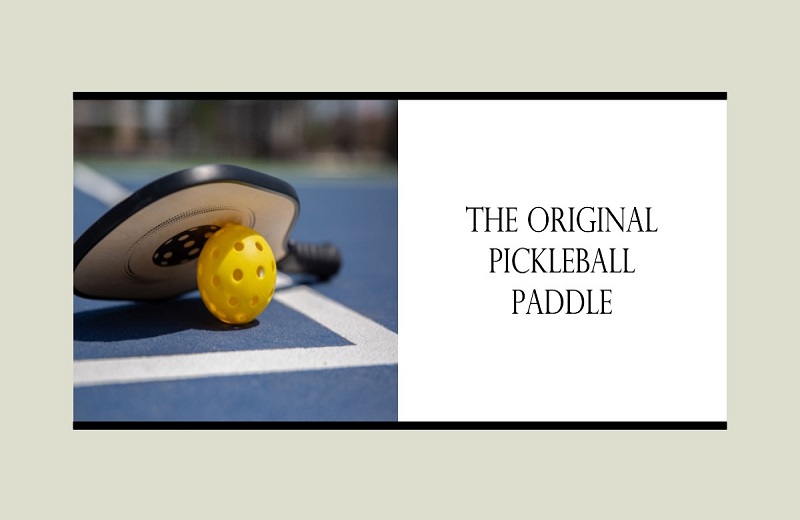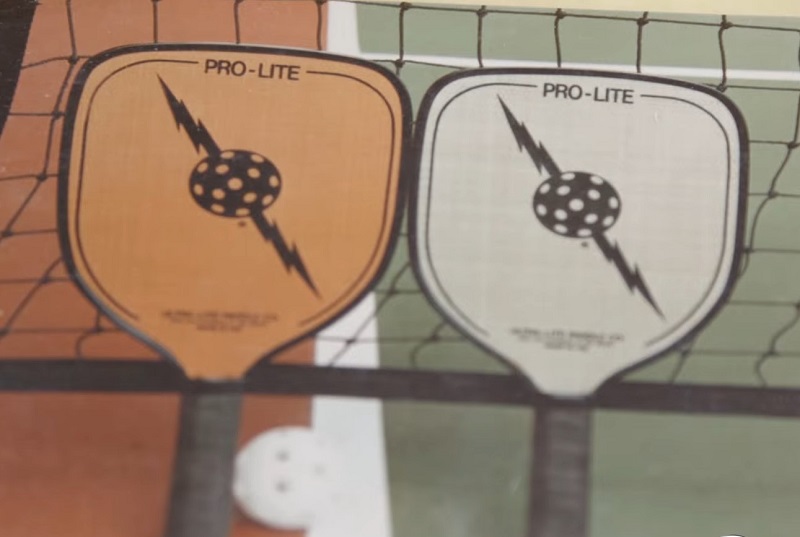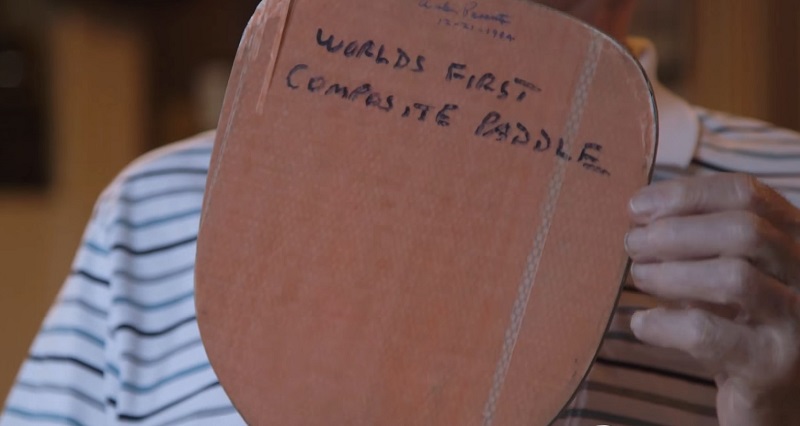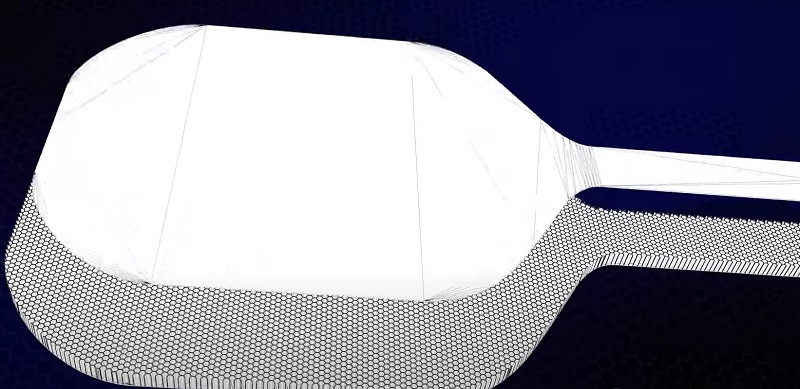The Birth and Evolution of Pickleball and The Original Pickleball Paddle
Historical Context of Pickleball
In the summer of 1965, on Bainbridge Island, a new sport was born out of necessity and creativity. Pickleball, a game that combined elements of tennis, badminton, and ping-pong, was invented to solve the problem of bored kids with nothing to do. The sport quickly gained popularity due to its simplicity and the fun it provided. It was not just a hit among the children but also adults, leading to its spread across the United States and eventually the big world.
The Original Pickleball Paddle
A Racket? Nah. The original pickleball paddle was actually a modified ping pong paddle, which proved to be too fragile for the game. The solution came in the form of a wooden paddle, an oversized, thicker version of a ping pong paddle. This wooden paddle provided players with more power and durability, marking the birth of the first real pickleball paddle.
The Evolution of the Pickleball Paddle
The pickleball paddle has come a long way since its wooden days. The introduction of composite materials, sourced from Boeing airplane floor panels, revolutionized the game. These composite paddles were lighter yet still durable, becoming the new standard for the sport.
Over time, innovations such as edge guards for added durability, different surface materials like fiberglass and graphite for varying power and control levels, and the introduction of a polymer honeycomb core for a balanced feel and forgiving sweet spot, have continued to evolve the game. Today, the design and aesthetics of the paddle are also considered, with modern paddles featuring exciting and unique designs. One such innovator in the sport is Steve Wong, a renowned player and ambassador for the sport, who has significantly contributed to the development and popularity of pickleball.
Price Changes Over Time: An Overview
Early Days and Low Costs
In the initial stages of pickleball, paddles were primarily homemade or crafted from simple, readily available materials. This simplicity kept the cost relatively low, making the sport accessible to many.
Rise in Popularity and Price
As pickleball gained popularity and the demand for paddles increased, manufacturers began to invest in research and development. This led to the introduction of paddles made from high-quality, durable materials like graphite and composite. These advanced paddles were more expensive to produce and thus sold at a higher price point.
Efficiency and Competition Lead to Price Decrease
Over time, as manufacturing processes became more efficient and competition in the market increased, the prices of these advanced paddles began to decrease. This made them more accessible to a wider range of players, further fueling the popularity of the sport.
Technological Advancements and Price Fluctuations
However, the introduction of new technologies and features, such as improved grip designs or specialized core materials, can still lead to price fluctuations. These innovations, while enhancing the game, can also increase the cost of production and thus the retail price.
Future Predictions
Looking ahead, it’s expected that the price of pickleball paddles will continue to be influenced by factors such as technological advancements, market competition, and consumer demand. As the sport continues to evolve, so too will the price and quality of its essential equipment.
The Modern Pickleball Paddle
Regulations and Standards
As a pickleball enthusiast, I’ve seen how the sport has grown and evolved over the years. One thing that has remained constant is the commitment to maintaining a level playing field. The USA Pickleball Association (USAPA) and the International Federation of Pickleball (IFP) have set strict regulations and standards for the design and manufacture of pickleball paddles. These rules govern everything from the size and weight of the paddle to the materials used in its construction. This ensures that the game remains fair and competitive, regardless of the level of play.
Manufacturing Process
The manufacturing process of modern pickleball paddles is a fascinating blend of science and art. It begins with the selection of materials. Today’s paddles are typically made from a combination of materials, including polymer, nomex, aluminum, and wood. These materials are chosen for their strength, lightness, and durability.
The core of the paddle is usually made from a honeycomb structure of one of these materials, providing a balance of power and control. The face of the paddle, which comes into contact with the ball, can be made from a variety of materials, including graphite, fiberglass, and poly. Each material offers unique playing characteristics, allowing players to choose a paddle that suits their style of play.
Player Play Experiences and Preferences
As a player myself, I’ve experienced firsthand the impact that the design of a paddle can have on my game. I’ve spoken to many other players who feel the same way. Some prefer the power and pop of a nomex or aluminum core, while others prefer the softer touch of a polymer core. The choice of face material can also greatly affect a player’s game. Graphite faces offer a consistent, reliable sweet spot, while fiberglass faces offer more pop and the ability to put spin on the ball. The evolution has allowed players to fine-tune their equipment to match their playing style, and the feedback from players has been overwhelmingly positive.
Technical Specifications of Modern Paddles
Modern pickleball paddles are a marvel of engineering. They are typically made from a honeycomb core of polymer, nomex, aluminum, or wood, covered with a face of graphite, fiberglass, or poly. The weight of the paddle can vary, but most fall within the range of 6 to 9 ounces.
The dimensions of the paddle are regulated by the USAPA and IFP, with a maximum width of 8.5 inches, a maximum length of 15.75 inches, and a maximum combined width and length of 24 inches. The grip size can vary, but most are between 4 and 4.5 inches in circumference. These specifications ensure that the paddle is balanced and comfortable to hold, while also providing the power and control needed to excel in the game of pickleball.
The Impact of Paddle Evolution on the Game and Market
Impact on Gameplay and Strategy
The evolution of the pickleball paddle has had a significant impact on how the game is played. I remember when the transition from wooden paddles to composite ones took place. It was a game-changer. The lighter, more durable paddles allowed players to exert more power and control over their shots, which in turn led to the development of new strategies. For instance, the polymer honeycomb core in modern paddles provides a forgiving sweet spot, allowing players to hit more accurate shots. This has made the game more dynamic and exciting.
Market Trends
The pickleball paddle market has grown exponentially over the years. Major manufacturers have emerged, each offering a variety of paddles with different materials and designs. The market has become highly competitive, with companies constantly innovating to gain an edge. For example, Baddle, one of the manufacturers, has been experimenting with different materials and designs, including using fiberglass and graphite in their paddle designs. This constant innovation has led to a diverse market, catering to players of all skill levels and preferences.
Future Developments
Looking ahead, I believe we can expect to see even more advancements in pickleball paddle design. With the continuous development of new materials and technologies, manufacturers will be able to create paddles that are even lighter, more durable, and more efficient. I also anticipate that we’ll see more customization options, allowing players to choose paddles that perfectly fit their playing style and preferences. The future of pickleball paddles is indeed exciting.
Player Learn to Adapt Paddle Evolution
As a pickleball player myself, I’ve seen firsthand how players have adapted to the evolution of pickleball paddles. The introduction of composite paddles, for instance, required players to adjust their playing style to take advantage of the increased power and control these paddles offered. It was a learning curve, but one that ultimately enhanced our performance and enjoyment of the game. Today, players continue to adapt to new paddle designs, always eager to explore how these innovations can improve their game.
Is there really a difference in pickleball paddles?
What other sport did the original pickleball paddle design come from?
How to compare pickleball paddles?
Conclusion
The evolution of the original paddle, from simple wood to advanced composites, has transformed the game and player experience. These advancements have diversified paddle options and allowed players to refine their strategies. This ongoing innovation promises an exciting future for pickleball.
Related Article:








